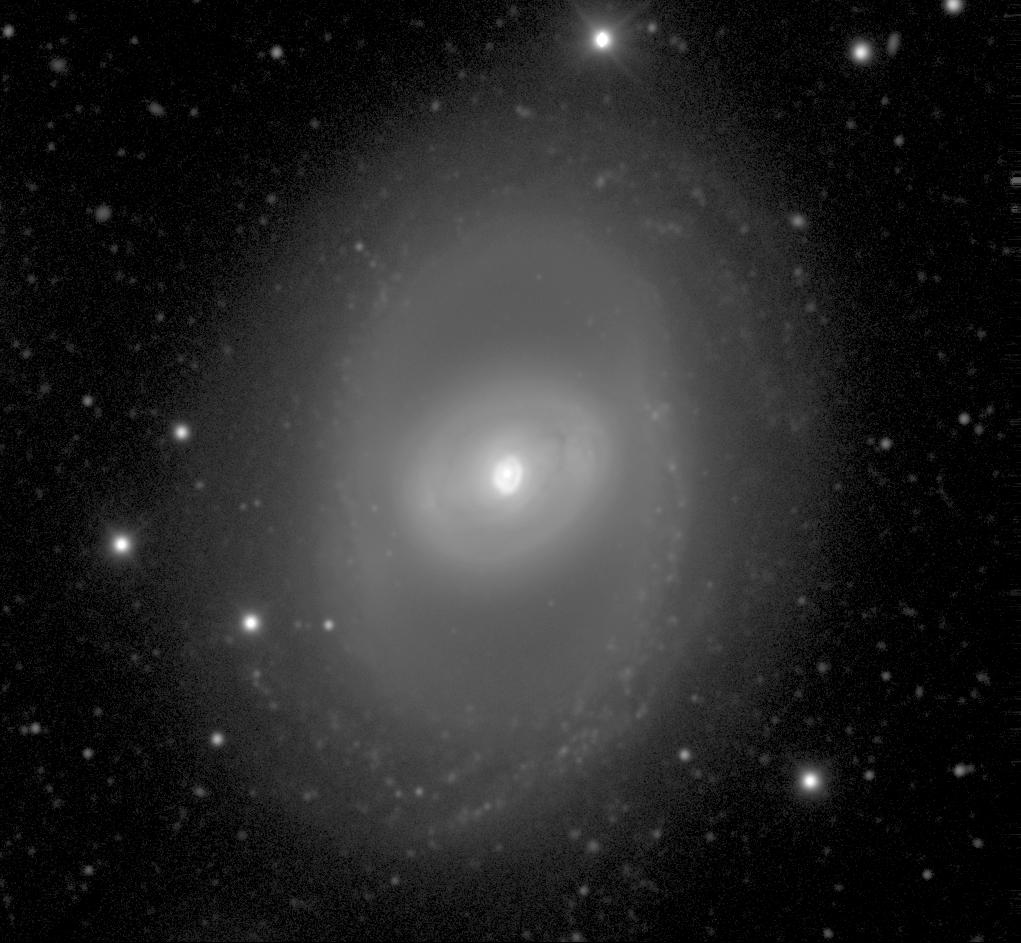

De Vaucouleurs Atlas Type: (R1)SAB(r)0/a
Filter: B
Telescope: CTIO 1.5-m
North up , East left
Field Dimensions: 6.2 x 5.7 arcminutes
RC3 Type: (R)SB(r)0+
RSA Type: RSBa
Surface Brightness Range Displayed: 16.5-27.0 mag per square arcsec
Absolute Blue Magnitude: -19.9
De Vaucouleurs Atlas Description:
This galaxy has three excellent ring features. In the center, a very bright nuclear ring of star formation is found. This feature was studied at high resolution by Buta et al. (2000); their HST image, shown separately, reveals resolved compact clusters and complex dust patterns inside and outside the ring. The nuclear ring lies inside a fairly weak but well-defined bar that appears to be affected by a complex dust pattern. Nevertheless, one can identify weak and curved leading dust lanes in the bar. Surrounding the bar is a very well-defined, very smooth inner ring . Outside this zone, an excellent R1 outer ring is found. Showing characteristic dimpling near the bar major axis, this feature is one of the best examples of this type of ring known. The S0/a classification is based on two faint spiral arms which break from the R1 ring near its major axis. In color index maps (Buta and Crocker 1991; Buta et al. 1998), we find star formation confined mainly to the nuclear ring, and the leading zones of the R1 ring. In H-alpha (Crocker, Baugus, and Buta 1996), HII regions are found in the nuclear ring, a zone on one side of the bar, and in the two outer arms which are likely to be parts of an R2' outer pseudoring . The H-alpha arms begin on the outer edges of the leading quadrants of the R1 ring. The fact that the R1 ring is largely stellar, while the partial R2' feature is defined by recent star formation, supports the idea of sequential formation of the two ring types (Byrd et al. 1994).